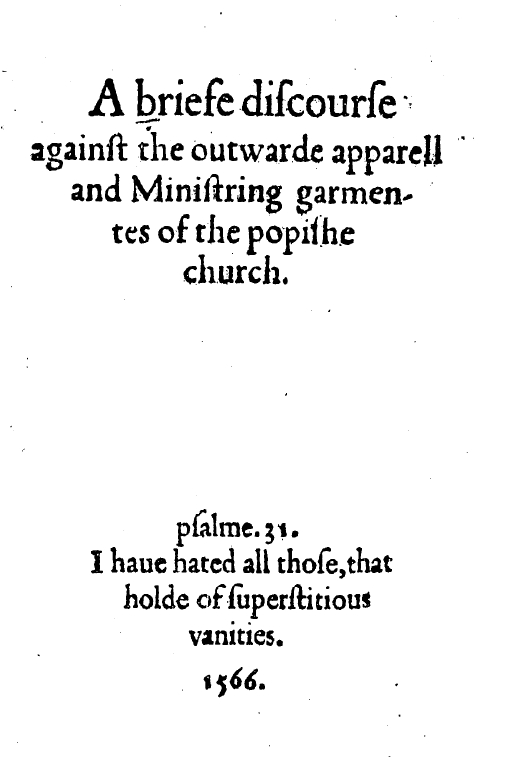Dear Conventiclers,
I must apologise for my long absence. I have been busy getting married (see this and this: I’m the one in the white dress) and writing various chapters of my PhD thesis.
Those of you who are long-term readers of this blog might remember that rather than studying the Puritans per se, I am studying some nineteenth-century historians who wrote about them. One of my historians, almost entirely forgotten now, although I have mentioned him a few times before on the Conventicle, is called John Stoughton. I think he’s rather interesting. Here’s a short introduction to him (adapted from my first chapter).
John Stoughton was born in 1807 and brought up in Norwich. Two hundred years earlier, he would have lived in a Puritan heartland. He may well have fitted in.
His autobiography, Recollections of a Long Life (1894), reveals a warm-hearted man with an eventful upbringing. His father worshipped in Methodist congregation, but still considered himself to be a Church of England man. His mother was a Quakeress until she married.
Stoughton’s father died when he was a small child, and he spent a lot of his time in his youth visiting Bethel Hospital (a secure psychiatric hospital), where his grandfather was master. His autobiography details the rather gruesome end his grandfather met when one of the patients had an awful aberration, forgetting that the scythe he was holding was supposed to be for mowing the lawn.
When Stoughton was seventeen, he felt a call to Christian ministry, but because of his mixed background had no idea which denomination to choose. After researching different options, he decided that, although no existing church model seemed to fit exactly with New Testament teaching, he felt Congregationalism came closest. This decision set the path for the rest of his life. He left his training as a lawyer and began preparing to be a congregational minister.
This involved moving to London. In the big city, Stoughton became deeply involved with the
British and Foreign Bible Society, and was much moved by the members’ love of evangelicals from all denominations, and their reverence for the works of the Puritans (who they saw as theological antecedents of nineteenth-century evangelicals).
Stoughton became a co-pastor of a congregational church in Windsor in 1833, and moved to Hornton Street Church, Kensington, in 1844. He was, as I said, chiefly a pastor, but he also nurtured an unquenchable interest in Church History.
In 1848, his first volume on the Puritans,
Spiritual Heroes, was published. In 1852 he wrote
Lights of the World, which included mini-biographies of Bunyan and Baxter, as representative of ‘Spiritual Valour and Victory’ and ‘Earnest Decision’ respectively. At this stage he was rather polemical in favour of the Puritans, and not what might be called an ‘academic’ historian. But as his research progressed so his approach and writing-style developed, and he became increasingly interested in his primary sources. Ten years later, his C
hurch and State Two Hundred Years Ago considered ecclesiastical affairs in England from 1660 to 1663. This was followed in 1867 by two volumes on
Ecclesiastical History from the Opening of the Long Parliament to the Death of Oliver Cromwell in 1867, and then two more volumes on the history of the
Church of the Restoration in 1870. In the end, Stoughton wrote another 5 volumes, moving his Church History forward in time to his own day. By this time he had altogether written 7 full-length volumes on the Puritan era alone, and many pamphlets and shorter works, and was widely respected in British Evangelical circles (both dissenting and Church of England). In 1872 he was given the chair of historical theology at New College (of Independent Dissenters), St John’s Wood, North London. He was also something of a public figure: in 1874 he spoke at the unveiling of the statue of John Bunyan in Bedford; in 1875 he performed a similar honour for the statue of Richard Baxter in Kidderminster. On both these occasions, he was considered a voice of articulate nonconformity.
He had various influential friends, including A.P. Stanley, who was Dean of Westminster, an important position within the Anglican Church.
Stoughton died in 1897. Shortly afterwards, a biography written by his daughter was published,
A Short Record of a Long Life. He has a rather small (and not factually inerrant) article devoted to him in the Oxford Dictionary of National Biography, but these days he is almost forgotten.
Stoughton played, I believe, a significant role in the ‘recovery’ of Puritanism in Britain in the nineteenth century. As we can see, he was both a prolific and a respected figure in his day. Let’s remember him for these things.
Signing off for now,
Susan C (was Susan A)















